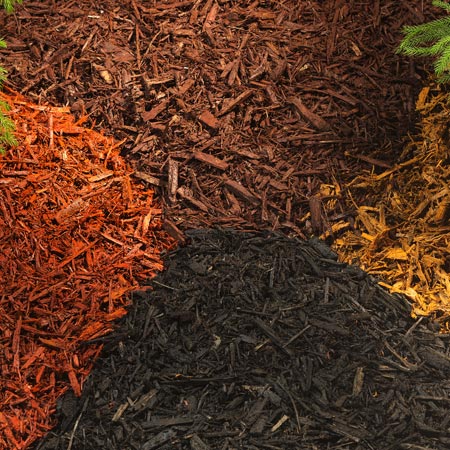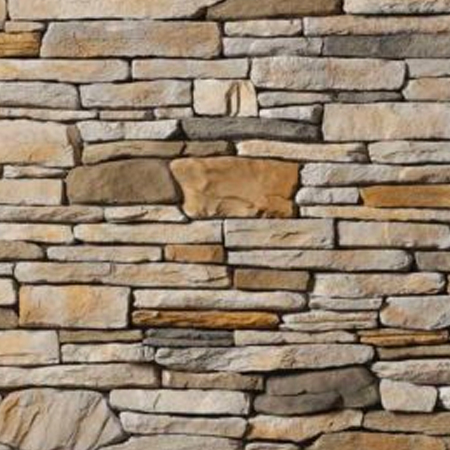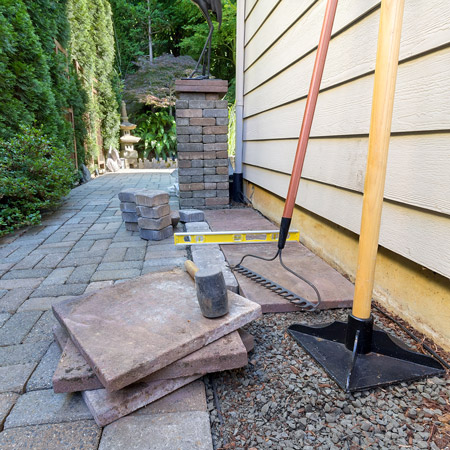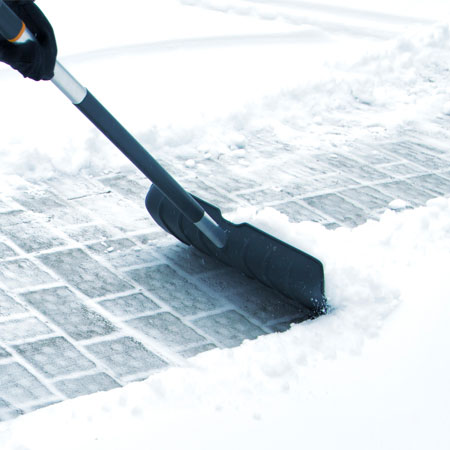
It is important to always choose the right materials for the job. From the actual stone to the gravel, sand and other materials that you use to build a solid base, it is important to go for the best quality in order to get the best results. J&J Materials offers a wide variety of natural stone materials and accessories with delivery services available for customers in Pawtucket and Providence, New Bedford and Dartmouth, Foxborough and Millborough, even as far east as Bourne and Scituate homeowners. Here are some other retaining wall how-to tips that homeowners and property owners can use to create a great looking wall in just a day or two.
Getting Started – Building a Solid Retaining Wall
If you have ever looked at a retaining wall you know that there are many different types. Depending on the natural stone materials that you choose to use, the stones could be small, they could be flat, they could be thick and they could even be boulder size. The best materials for retaining walls will depend on the type of retaining wall that you want to build, the amount of space you have to build it and the type of architecture of the home itself.
Tip #1 – Start With a Solid Base
The best tip is the first tip that you should remember when considering retaining wall how-to tips for your Southeastern Massachusetts home. It is important to start building your retaining wall with a solid base. A simple 5-6″ deep trench will be sufficient. Make sure to fill it with fine or pea-sized gravel and compact it to ensure a sturdy base that will allow water to filter through without damaging the integrity of the retaining wall. Place your base of natural stone materials about an inch or two into the ground and check to make sure that it is level before adding anything on top of this base layer.
Tip #2 – Level As You Go
While we already mentioned the importance of making sure that your base layer is level, it is also important to continue to use a level as you go. While a level foundation is key to the success of your retaining wall, Scituate homeowners and project builders throughout the New England area should take special care to ensure that each layer is checked and level. A level retaining wall will last longer, look better and be stronger than a wall that is haphazardly built.
Tip #3 – Backfill As You Go
Make sure to backfill the natural stone materials of your retaining wall as you go in layers. Don’t ever backfill all in one step, as it is important to allow the soil to settle a bit at a time to prevent the wall from sinking or shifting later. Eight to twelve inch increments of soil an be added against the wall and then compacted for best results.
Tip #4 – Use Gravel on a Slope
In addition to proper backfilling techniques, you will want to install gravel behind a retaining wall that will be used to hold back soil that has a slope. Filter fabric, such as landscaping fabric, should also be used in addition to the gravel for even better soil management.
Tip #5 – Think Outside the Box
While most retaining walls are straight, a great design idea is to think “outside the box” and create some curving lines in your structure. To mark the area for proper digging and construction, use a garden hose as a guide and spray paint along the grass or dirt to mark the area that you want the retaining wall to be built. Make other shapes, such as creating corners, half circles, angles and other interesting designs.
Tip #6 – Support the Slope
If your retaining wall will start at a lower grade, you want to support the slope by stepping up the base in increments. Do your digging, use gravel and backfill as you go up in increments to support the changes in the grade of the slope.
Tip #7 – Start Small
If this is your first retaining wall made with natural stone materials, start with a smaller wall. A two foot retaining wall is a great way to get started – use it to surround your garden areas, separate landscaped areas from other hardscaping elements or add definition around a walkway or driveway. It is possible to build up to a three foot retaining wall without using mortar or cement.
Tip #8 – Choose the Best Materials
Whatever type of natural stone materials you decide to use, make sure that you visit the stone yard yourself to pick out the best materials for retaining walls. You will want to make sure that the stones are the same or similar in color, similar in thickness and length, as well as the same good quality.
Tip #9 – Consider Manufactured Blocks
If you have trouble using natural stone materials because of the variations in the natural state of the materials, consider using manufactured blocks instead. High quality manufacturers, such as Belgard, Nantucket pavers and Pavestone are all available through J&J Materials.
Tip #10 – Put a Cap on It
For a more professional look and feel, make sure to put a finishing cap on your retaining wall. You can either place the cap on top, as you did with the rest of the natural stone materials or manufactured blocks, or you can also cement a cap on top for even more stability. The method you use will depend on the height of your retaining wall, the materials that you chose to use and the function of the retaining wall.
Scituate Homeowners: Delivery Available Through J&J Materials
For the best materials for retaining walls, visit J&J Materials. With two locations in Southeastern Massachusetts, one in Seekonk and the other in Bourne, J&J Materials has a wide delivery service area that includes Pawtucket and Providence, but also covers all the way east to Scituate. What that means is that homeowners in the far eastern part of the state can enjoy home delivery of quality natural stone materials and manufactured retaining wall materials without having to rent a truck or make several trips back and forth. Contact J&J Materials to find out more about their delivery service or come by to look at all of our natural stone materials, products and accessories that you can use to build a retaining wall.






